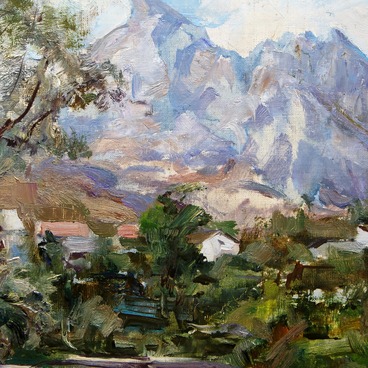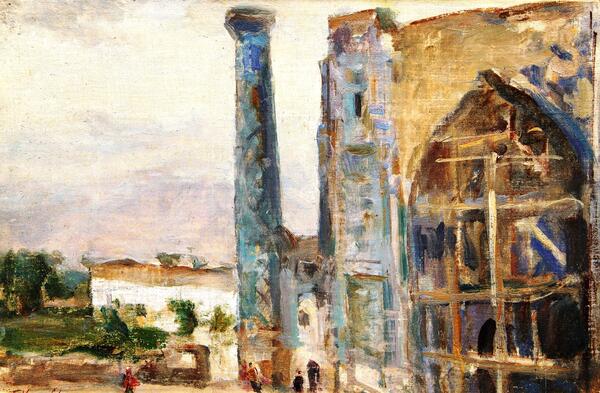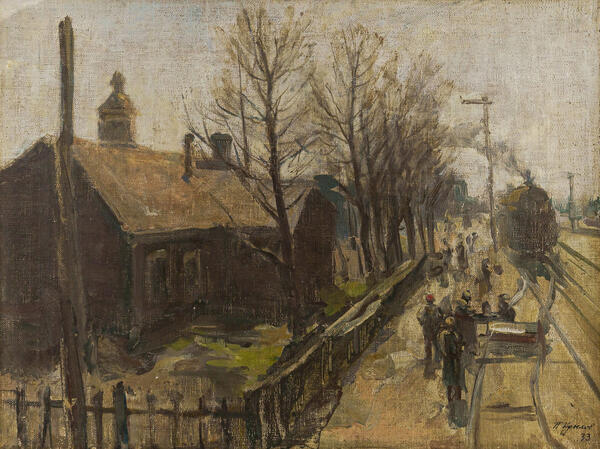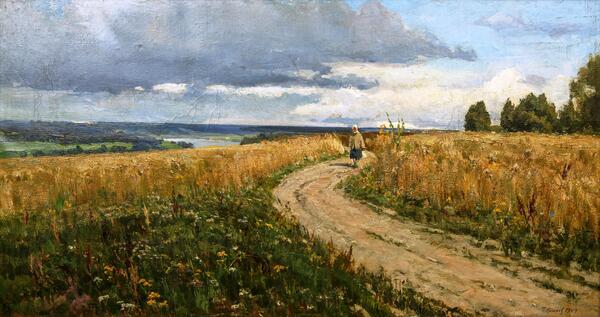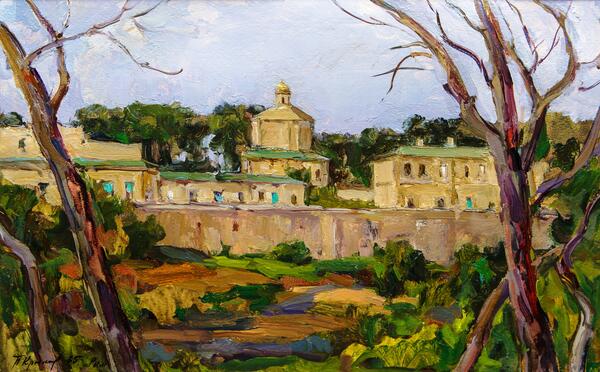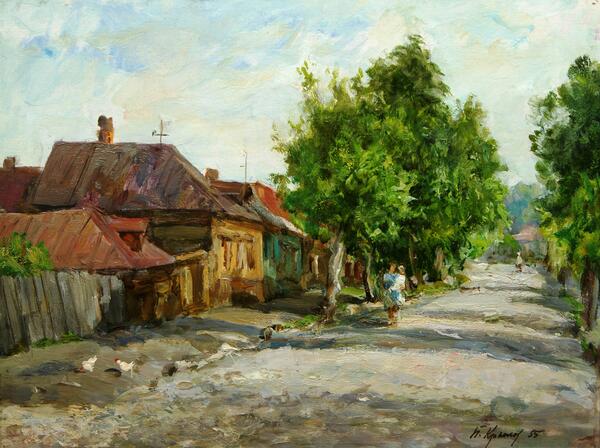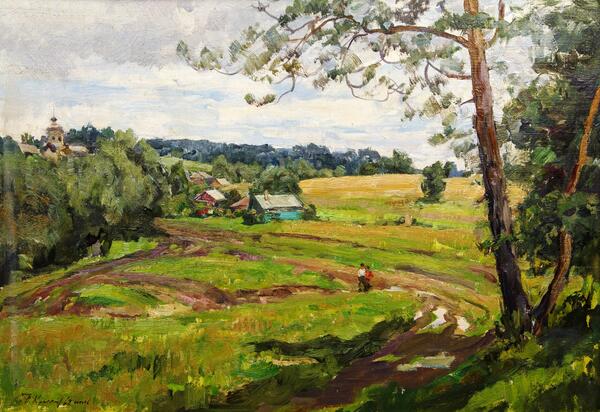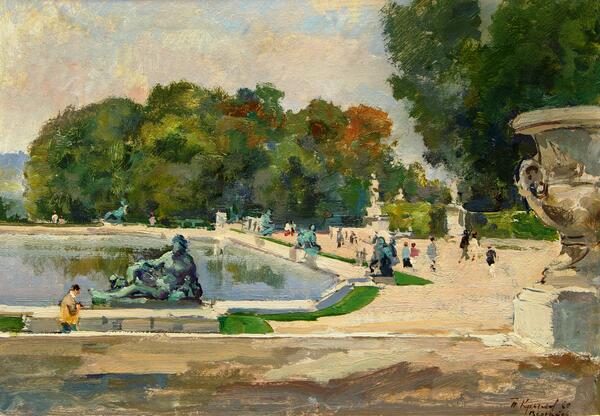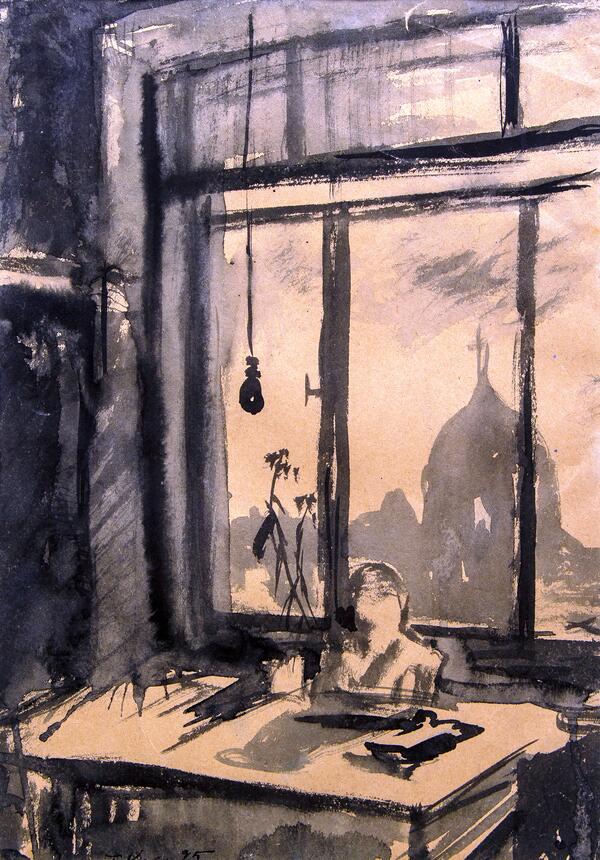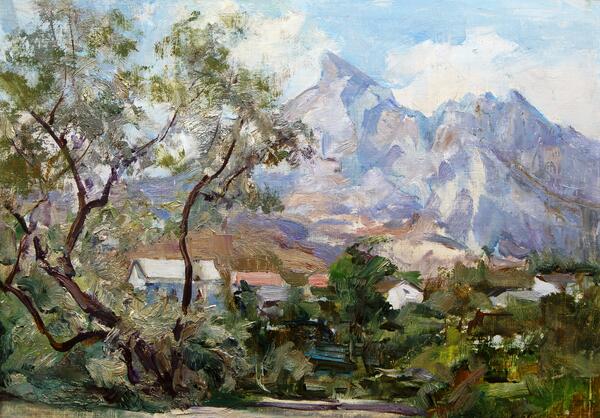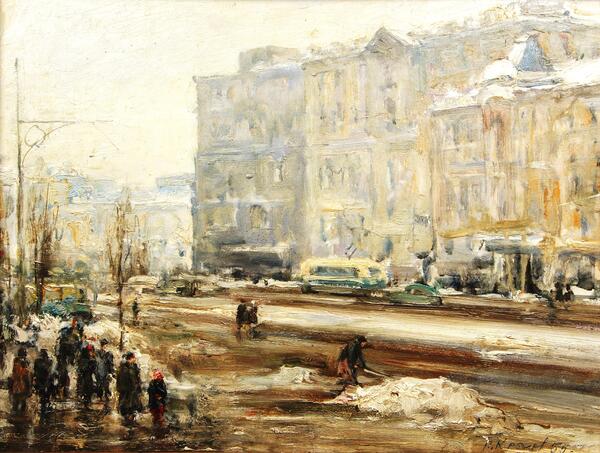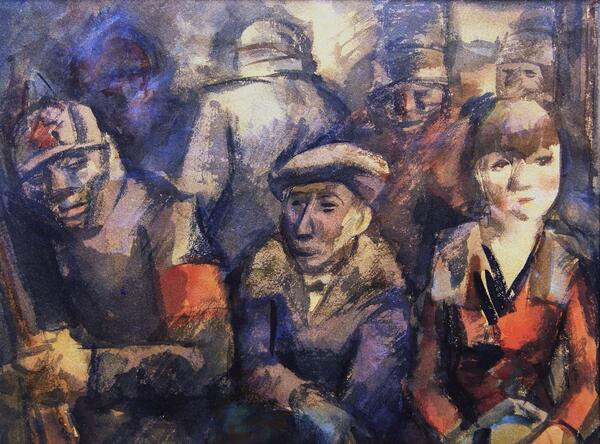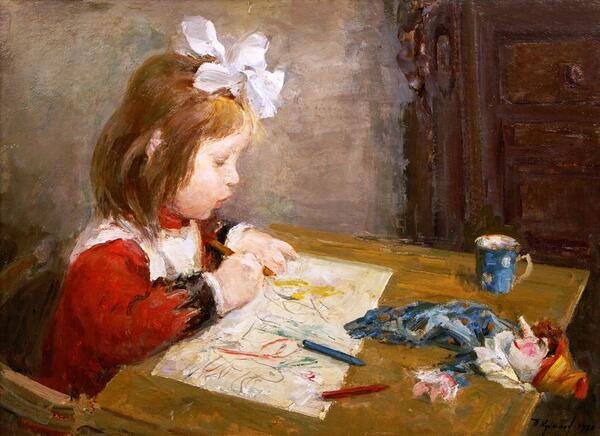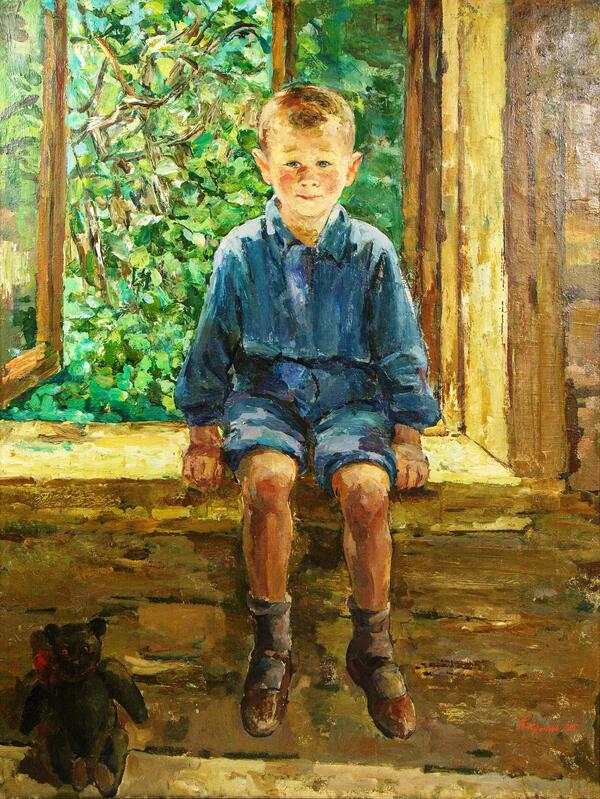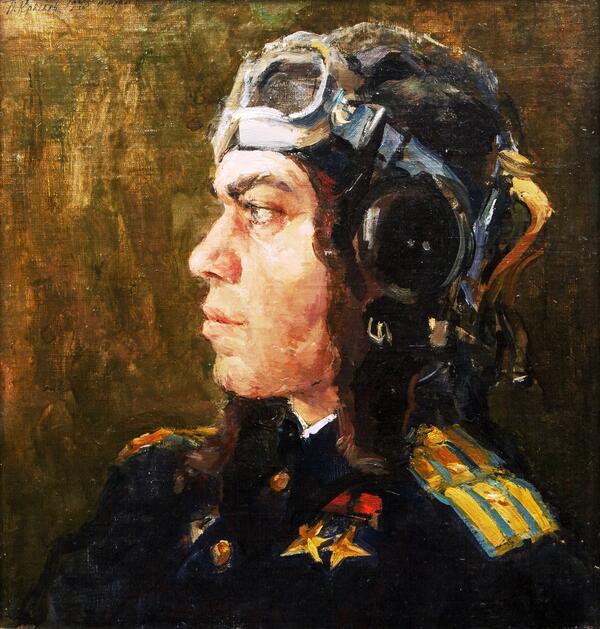“Roses and Blue Plums” is one of the most famous works by the artist Porfiry Krylov. His body of work is very multifaceted — from anti-fascist cartoons and political posters to European landscapes and children’s portraits. Flowers hold a special place in Krylov’s art: they were the centerpiece in a number of his still lifes, he glorified them and perpetuated their beauty.
Yet, “Roses and Blue Plums” is just one page from the artist’s “Painted Poem About Flowers”, which the artist compiled throughout his life. The painting depicts a bright sunny day at the very beginning of autumn. A bouquet of delicate tea roses and a plate with ripe shiny plums are placed on a table covered with a snow-white tablecloth. The composition is simple, yet full of exquisite beauty and harmony. The flowers are put in a glass jar, yet it shines like a diamond in the sun, making the bouquet especially charming. Juxtaposed against the dark-blue plums, the rose petals seem more delicate and airy, and the sunlight in the picture more joyful and bright.Roses and Blue Plums
Shining, the clouds take shape
In the blue of the blazing hot noon.
Two roses near the window just bloomed —
Two bowls full of fire…
Sometimes torrents of showers
Ran noisily by…
But the sun and the sky kept on shining
In the rippling reflections they left —
… And the noon went on shining, and the roses they swooned,
Languidly tilting their heads,
Smiling through tears
With eyes full of fire.
Krylov really liked painting roses in his still lifes. It didn’t matter if they were painted in oil or watercolor, bright scarlet or noble yellow, opening up their gentle buds or dropping light petals — they were all equally beautiful on his canvases.
Porfiry Krylov also painted other flowers — bright wildflowers, lush lilacs, delicate scorpion grasses, fragrant peonies, festive carnations, slender gladioli and even water lilies. Porfiry Krylov’s elegant floral still lifes are kept in many museums in Russia and in private collections.
Porfiry Krylov was a member of the creative collective of Soviet artists called “Kukryniksy”. He was a People’s Artist of the USSR, academician, winner of five Stalin prizes and other state awards. In collaboration with the Kukryniksy, he was a regular artist of the newspaper Pravda (“Truth”) and the magazine Krokodil (“Crocodile”), as well as the author of illustrations for the works of Anton Chekhov, Maxim Gorky and Mikhail Saltykov-Shchedrin.


